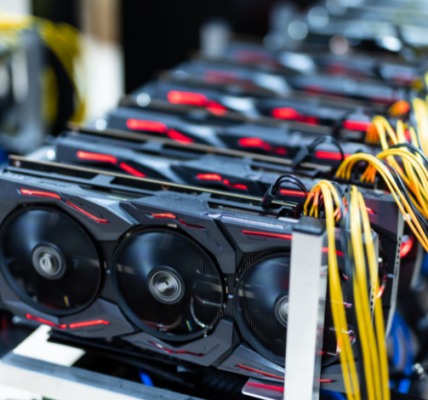Optimize display settings to save battery power is one of the simplest yet most effective ways to extend the life of your device. By tweaking a few key settings on your smartphone tablet or laptop you can significantly reduce battery drain caused by the screen which is often one of the most power-hungry components.
Modern devices come with high-resolution displays and advanced brightness levels that enhance user experience but consume a considerable amount of energy. Understanding how to adjust settings like brightness screen timeout and color themes can help you achieve a better balance between performance and power efficiency.
Display Settings in Battery Consumption
The screen of any device like a phone, tablet or laptop uses the most power. If you use a bright and colorful screen for a long time your battery will drain very quickly. This is because the display needs a lot of energy to show clear pictures, bright colors and high resolution. To avoid this problem you can optimize display settings to save battery power. Small changes in how your screen works can make a big difference.
For example turning down your screen brightness, changing screen timeout settings or using dark mode can help save battery life. Your device will still work just fine but it won’t need as much power to keep the screen on. The best part is that these changes are easy to do. You don’t need to be a tech expert to adjust display settings. By learning about how your screen uses power you can enjoy your devices for longer without worrying about running out of battery.
Adjusting Screen Brightness for Maximum Efficiency
One of the easiest ways to optimize display settings to save battery power is to lower your screen brightness. Most devices have very bright screens by default. While a bright screen looks nice it uses a lot of energy. If you turn the brightness down the screen will still be clear and your battery will last longer. You can change the brightness level by going to your display settings.
Many devices also have an auto-brightness feature. This setting adjusts the screen brightness based on the light around you. If you are outside in bright sunlight the screen becomes brighter so you can see clearly. If you are inside or in a dark room the screen gets dimmer to save power. This smart feature is a great way to keep your device’s screen working efficiently without wasting battery.
Enabling Auto-Brightness: Is It Worth It?
Auto-brightness is a helpful feature that many devices offer. When you turn it on your screen changes brightness automatically. It becomes bright when you are outside or in bright light and it dims when you are indoors or in the dark. This means you don’t have to adjust it by yourself every time. This feature is a smart way to optimize display settings to save battery power because it keeps your device from being too bright when you don’t need it.
However not everyone likes auto-brightness. Some people find it better to set the brightness to a fixed level that works for them. If you don’t use auto-brightness you can manually set your screen to a lower level and change it only when needed. Both ways are helpful and it depends on what feels easier for you. By finding the best way to control your screen brightness you can make sure your battery lasts longer throughout the day.
Reducing Screen Timeout Duration
Have you noticed that your screen stays on even when you’re not using it? This is because of the screen timeout setting. Screen timeout decides how long your display stays lit after you stop using your device. If the timeout is set to a long time like 2-5 minutes the screen uses more energy. You can optimize display settings to save battery power by reducing the screen timeout to 30 seconds or 1 minute.
Shortening the timeout means your screen will turn off quickly when you are not using it. For example if you forget to lock your phone the display will turn off automatically after a short time. This small change can save a lot of battery over time. It is easy to do by going to your device’s display settings. A shorter timeout helps the battery last longer without affecting how you use your device.
Switch to Dark Mode for Energy Savings
Dark mode is another great way to optimize display settings to save battery power. In dark mode the screen uses dark colors like black and grey instead of bright white. Bright screens use a lot of energy because the display lights up every pixel. When you switch to dark mode the screen doesn’t need as much light so the battery lasts longer. This works especially well on devices with OLED or AMOLED screens.
Dark mode is also easier on your eyes especially at night. When you use your device in a dark room a bright screen can feel harsh and uncomfortable. Dark mode reduces eye strain and makes it more comfortable to use your device. Many apps, websites and even operating systems now offer a dark mode option. Turning it on is simple and gives you a better experience while saving battery.
The Right Display Resolution
Display resolution means how sharp and clear your screen looks. High-resolution screens like 4K or HD look beautiful but they use a lot of power. To optimize display settings to save battery power you can choose a lower resolution on some devices. For example instead of using 4K resolution all the time, switch to Full HD or a lower setting. The screen will still look nice but it will use less energy.
If your device allows it, adjusting resolution can save a lot of battery. High resolution is great for watching videos or playing games but you don’t always need it. For normal tasks like texting or browsing, lower resolution works just fine. It’s like choosing the right tool for the job. By picking a balanced display resolution you can save power without losing quality.
How Adaptive Refresh Rate Can Save Power
Adaptive refresh rate is a smart feature on some modern devices. It changes how fast your screen updates depending on what you are doing. For example when you are watching videos or playing games the screen refreshes faster to look smooth. When you are reading or looking at photos it slows down. This helps optimize display settings to save battery power because the screen doesn’t work harder than needed.
A high refresh rate uses more energy so it’s better to use adaptive settings when possible. If your device doesn’t have this feature you can manually lower the refresh rate in the display settings. For most activities a lower refresh rate still looks great. By controlling the refresh rate you can enjoy a smooth screen experience while saving battery life.
Tips to Extend Battery Life Beyond Display Settings
While display settings play a big role there are other ways to save battery power too. For example, turning off Wi-Fi, Bluetooth and location services when you’re not using them helps a lot. These features use energy to keep your device connected and updated. By turning them off when you don’t need them you can extend battery life.
Another tip is to close apps running in the background. Apps that stay open use power even when you’re not using them. Go to your device settings and close unnecessary apps. Also try not to use live wallpapers or animations on your screen. Simple static wallpapers use less power and are better for your battery. Combining these tips with display settings can help your device last much longer.
Conclusion
Learning to optimize display settings to save battery power is an easy way to keep your devices running longer. Small changes like lowering brightness, switching to dark mode and reducing screen timeout make a big difference. By managing your display settings you can save energy and enjoy your phone, tablet or laptop without worrying about running out of battery. Combine these efforts with other power-saving tips and you’ll see how much longer your battery can last!




